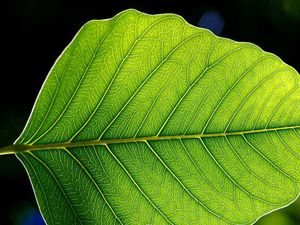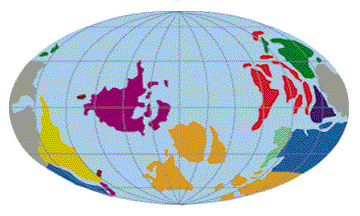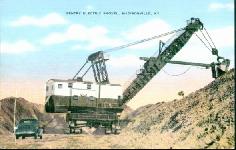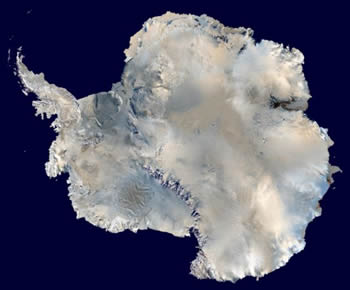This picture is an example of early autotrophs.
Click on image for full size
Image courtesy of Corel Photography
Early Life
Over a very long time, gradual changes in the earliest cells gave rise to new life forms. These new cells were very different from the earlier heterotrophs because they were
able to get their energy from a new source -- the Sun.
Organisms that are able to make their own food (in the form of sugars) by
using the energy of the
Sun are called autotrophs, meaning "self-feeders".
Photosynthesis is the name of the process by which these autotrophs use energy from the sun and eat.
Because the autotrophic bacteria were able to feed themselves by
using the energy of the Sun, they were no longer dependent on the same
limited food supply as their ancestors and were able to flourish. Over millions of years of
evolution, photosynthetic bacteria eventually gave rise
to modern day plants.
The appearance of organisms capable of performing photosynthesis was very significant -- if it weren't for the photosynthetic activity of
these early bacteria, Earth's atmosphere would still be without oxygen
and the appearance of oxygen-dependent animals, including humans, would
never have occurred!
You might also be interested in:

Photosynthesis is the name of the process by which autotrophs (self-feeders) convert water, carbon dioxide, and solar energy into sugars and oxygen. It is a complex chemical process by which plants and
...more
The first beings were probably much like coacervates. As a group, these bacteria are called heterotrophic anaerobes (ann-air-robes). Because there was virtually no oxygen in the atmosphere at this time,
...more
Kingdom Plantae contains almost 300,000 different species of plants. It is not the largest kingdom, but it is a very important one! In the process known as "photosynthesis", plants use the energy of the
...more
The Archean is the name of the age which began with the forming Earth. This period of Earth's history lasted a long time, 2.8 billion years! That is more than half the expected age of the Earth! And no
...more
Eventually, photosynthesis by the earliest forms of plant life (a form of life capable of feeding itself instead of feeding off of others) began to produce significant amounts of oxygen. One important
...more
Extreme environments are places where "normal" life finds it hard to survive. That doesn't mean that there isn't any life in extreme environments. Certain creatures can live and grow in extreme environments.
...more
Some environments are not good homes for most "normal" kinds of life. Places like that are called extreme environments. That doesn't mean that there isn't any life in extreme environments. Certain creatures
...more















